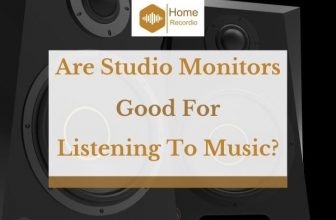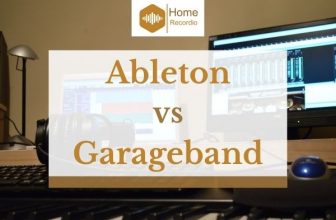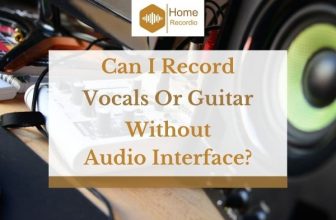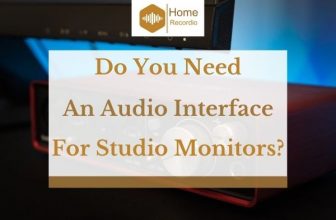Preamp vs Dac – What’s The Difference?
Over the years, I have learned that transmitting an analog signal from one device to another has never been easy.
You will need the best equipment to transmit quality sound. Each sound gear you have has to play a role and impact the quality of the signal it is transmitting.
My conventional wisdom and common sense tell me it’s possible and easy to transmit and amplify another sound.
It gets more complicated if you try to understand how digital signals are converted to analog sound. Intrinsically, the entertainment units widely used today transmit a signal between one another.
You will need the right equipment to make sure the signal transmission chain is complete. An analog or digital signal will vary in phase, amplitude, or some other characteristics.
This is why there are many debates about preamp vs DAC, and there is a lot to know.
Read on.
[amazon table=”7480″]Table of Contents
What Is A Preamp And How Does It Work?
Video: “What Is A Preamp, And Do I Need One?”
A preamplifier is an electronic device that increases the power of a signal. It makes it easy to convert a weak electrical signal into a stronger output signal.
The end product is a clear signal that is free from noise or external interferences. Your signal will be good enough to transmit to a loudspeaker or power amplifier. Without a preamp, you will have a distorted or noisy signal.
With this incredible electronic device, you can efficiently amplify signals from pickups, microphones, or phonographs.
However, you have to place the preamp close to the analog sensors and reduce noise and distortion effects. With a clear overview of why you will need a preamplifier, you shouldn’t have any reservations about picking the best type.
An ideal preamp will have a constant gain through the provided operating range, high input, and low output impedance.
You will easily use it to boost your signal strength to drive the cable to the primary device. However, it should perform this role without reducing the signal-noise-ratio.
The widely used and best types of preamps are charge-sensitive preamp, current-sensitive preamp, and parasitic-capacitance amplifier.
You can integrate the best preamp in the audio inputs on sound cards, DJ Mixers, and mixing consoles or systems. Depending on your requirements, you can use your preamplifier as a standalone device.
A preamp is an excellent choice for boosting signals during live music events and recording studio sessions. You will also find a preamplifier integrated into an electret microphone or television receiver antenna.
If the preamp you are using is not a built circuit within a device, you can use it as a dedicated external device with a circuit.
There are notable benefits that attracted me to an external preamplifier. And they include:
- Better sound quality thanks to the higher gain settings or circuitry the preamp is equipped with.
- Lower noise due to lower audio interferences.
- Special sound character as it sounds more transparent and clean.
- Amazing features such as low cut, phase reverse, or pad switches.
If you are still wondering if it’s wise to invest in preamplifiers, stress no more.
A preamplifier is designed to switch between different line-level sources and boost your signal before sending it to the amplifier.
It will work on a weak signal and make it stronger for processing, prevent noise and provide a clean output.
What is a DAC, and How Does it Work?
Video: “What is a DAC? – Explained”
Over the years, I have been wondering how digital audio equipment like MP3 or CD produce sound. After thorough research, I learned about DAC or digital-to-analog converter.
This incredible system takes digital input data and converts them into analog audio signals for their designated purposes.
Whenever I am listening to a digital recording, I know I am listening to a specific analog signal converted using DAC. DACs differ depending on the device you are using.
The common DACs you may have used include; music players like Mp3, CDs, DVDs, computer sound cards, and cell phones.
The DAC used in a smartphone is a basic one as compared to external digital-to-analog converters.
Your smartphone’s sound is excellent and transparent for conversation but can’t compare to one from music recordings.
DACs are used in mobile phones and TVs to take input digital video data into analog video signals.
In these two applications, the audio DAC is low-frequency and high-resolution format. On the other hand, the video DAC is a high-frequency format with a low-to-medium-resolution. Hence, the difference in signal clarity and resolution.
[amazon box=”B07G2NQYLX”]You can never go wrong with a digital-to-analog converter. This system takes a binary number (series of 0s and 1s) of the digital form and turns it into an analog format.
Before creating the audio format, the DAC will generate a wave that jumps between each digital audio reading.
DAC will convert these jumps between each reading into a continuous, smooth, and transparent analog reading.
DAC will look at two points on the stair step wave through interpolation and determine the right value between them. The final audio sound will be smooth, less noisy, and distorted.
Preamp vs DAC – What are the Differences?
If you are wondering whether to pre-amplify or not, I have the right solutions for you. Start by gathering robust details on preamp vs DAC and their main differences.
Preamp acts as the control unit of a system. It’s the volume control or input or output selector of many entertainment units you may have at home.
On the other hand, DAC helps convert the raw digital signal that may come from a media player to an analog signal. This signal can then be used by analog components such as speakers and amplifiers.
Once DAC converts these signals from CDs, MP3, tape player, or Blu-ray player, you might need a preamp to boost the signals.
Despite DAC converting digital signals to analog, the preamp will feeble it and act as the volume control. The good news these days is most DACs come with a preamp inbuilt.
Therefore, if your DAC comes with volume control, it will be considered a DAC + preamp. You don’t need to invest in an external preamplifier or a unit with an inbuilt preamp. In many systems, there is always a preamplifier built in the systems.
Many engineers ensure a photo-coupler in a preamp helps prevent interference between the audio signals and volume.
In essence, they eliminate the connection between the signal path from DAC and volume control supported by preamplifiers. The key difference is that preamp is the driving force behind both voltages of the circuit and current, unlike in DAC.
Eliminating preamp in your system means you will negatively affect the final signal output. The output signal from DACs will be low in quality.
Thus preamp provides balance and tone control, but DAC will not play such a role.
- The number of channels
- Maximum gain
- In-line processing and
- Type of preamplifier
- Resolution
- Speed
- Dynamic range and
- Digital to analog converter architectures
Final Thoughts
If you are looking for the best way to improve sound quality, don’t have worries about investing in a preamplifier. A preamp is designed to boost the volume of your systems.
The preamplifier is the first stop for an audio signal before it travels to the amplifier and other equipment like speakers.
A preamplifier also helps prevent noise and ensures the final output will be clear and transparent. If you prefer a separate setup, invest in an external preamplifier to boost your equipment volume.
If wondering what is going on inside your audio devices, DAC is the system that provides the analog audio signal.
A Digital-to-analog converter converts the digital signal from your media players into an analog signal.
With this information at your fingertips, I promise you can choose entertainment and communications systems stress-free in the competitive market.




